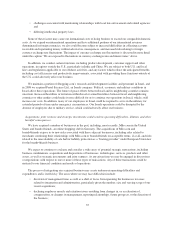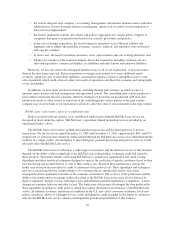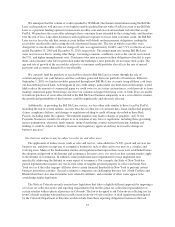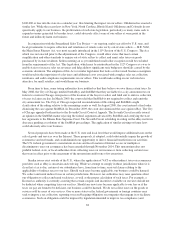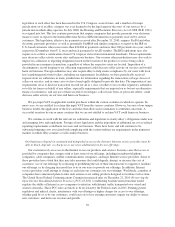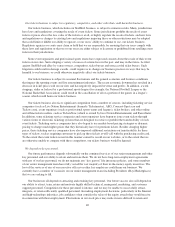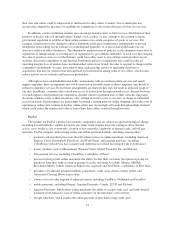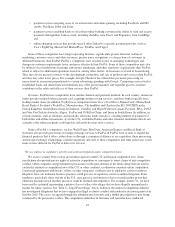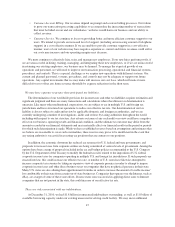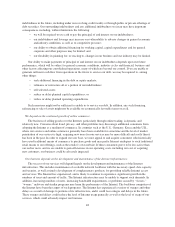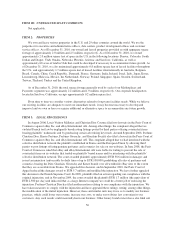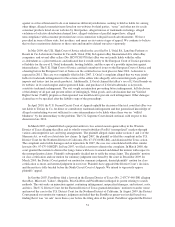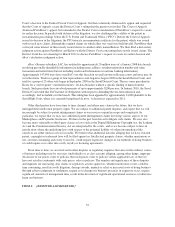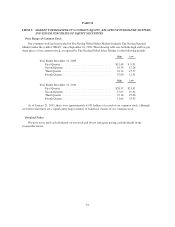eBay 2010 Annual Report Download - page 48
Download and view the complete annual report
Please find page 48 of the 2010 eBay annual report below. You can navigate through the pages in the report by either clicking on the pages listed below, or by using the keyword search tool below to find specific information within the annual report.affect the utility of shopping comparison sites if manufacturers limit variation in product pricing. In addition,
sellers are increasingly utilizing multiple sales channels, including the acquisition of new customers by paying
for search-related advertisements on search engine sites such as Google, Bing and Yahoo!. We use product
search engines and paid search advertising to help users find our sites, but these services also have the potential
to divert users to other online shopping destinations.
We also compete with many local, regional, and national specialty retailers and exchanges in each of the major
categories of products offered on our site. For example, category-specific competitors to offerings in our “Clothing,
Shoes & Accessories” category include, among others, AE.com, Amazon.com, Bluefly.com, Coldwater-Creek.com,
Dillard’s, DSW, The Gap, J.C. Penney, Kohl’s, Land’s End, Lane Bryant, LL Bean, Macy’s, Nike, Nieman-Marcus,
Nordstrom, Old Navy, Overstock.com, Payless, Shoebuy, Shoes.com, Target, Victoria’s Secret, Wal-Mart and
Zappos.com, as well as other online and offline retailers, stores and shopping networks.
Our international Marketplaces websites compete with similar online and offline channels in each of their
vertical categories in most countries. In addition, they compete with general online ecommerce sites, such as:
Quelle and Otto in Germany; Leboncoin.fr and PriceMinister in France; Taobao in China; Tradus (owned by
Naspers) in Poland; Yahoo-Kimo in Taiwan; Lotte, Naver and 11th Street in South Korea; Trading Post, OZtion
and Aussie Bidder in Australia; and Amazon and Play.com in the United Kingdom and other countries. In some
of these countries, there are online sites that have much larger customer bases and greater brand recognition than
we do, and in certain of these jurisdictions there are competitors that may have a better understanding of local
culture and commerce than we do. As our businesses in less-developed countries grow, we increasingly may
compete with domestic competitors which have advantages we do not possess, such as a greater ability to operate
under local regulatory authorities.
The principal competitive factors for Marketplaces include the following:
• ability to attract and retain buyers and sellers;
• volume of transactions and price and selection of goods;
• trust in the seller and the transaction;
• customer service; and
• brand recognition.
With respect to our online competition, additional competitive factors include:
• community cohesion, interaction and size;
• website ease-of-use and accessibility;
• system reliability;
• reliability of delivery and payment;
• level of service fees; and
• quality of search tools.
We may be unable to compete successfully against current and future competitors. Some current and
potential competitors have longer operating histories, larger customer bases and greater brand recognition in
other business and Internet sectors than we do. Other online ecommerce sites may be acquired by, receive
investments from, or enter into other commercial relationships with well-established and well-financed
companies. As a result, some of our competitors with other revenue sources may be able to devote more
resources to marketing and promotional campaigns, adopt more aggressive pricing policies and devote
substantially more resources to website and systems development than we can. Some of our competitors may
offer or continue to offer free shipping or other transaction-related services which improve the user experience on
43




